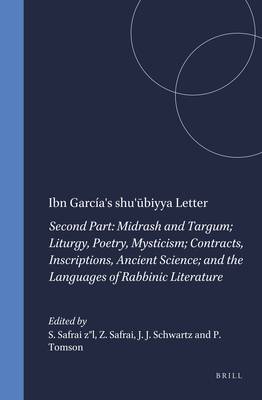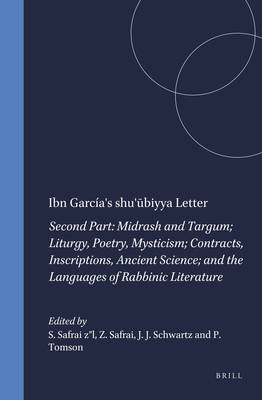
- Retrait gratuit dans votre magasin Club
- 7.000.000 titres dans notre catalogue
- Payer en toute sécurité
- Toujours un magasin près de chez vous
- Retrait gratuit dans votre magasin Club
- 7.000.0000 titres dans notre catalogue
- Payer en toute sécurité
- Toujours un magasin près de chez vous
The Literature of the Jewish People in the Period of the Second Temple and the Talmud, Volume 3: The Literature of the Sages
Second Part: Midrash and Targum; Liturgy, Poetry, Mysticism; Contracts, Inscriptions, Ancient Science; And the Languages of Rabbinic Literature
224,45 €
+ 448 points
Description
This long-awaited companion volume to The Literature of the Sages, First Part (Fortress Press, 1987) brings to completion Section II of the renowned Compendia series.
The Literature of the Sages, Second Part, explores the literary creation of thousands of ancient Jewish teachers, the often- anonymous Sages of late antiquity and the Middle Ages. Essays by premier scholars provide a careful and succinct analysis of the content and character of various documents, their textual and literary forms, with particular attention to the ongoing discovery and publication of new textual material.
Incorporating groundbreaking developments in research, these essays give a comprehensive presentation published here for the first time. This volume will prove an important reference work for all students of ancient Judaism, the origins of Jewish tradition, and the Jewish background of Christianity.
The literary creation of the ancient Jewish teachers or Sages - also called rabbinic literature - consists of the teachings of thousands of Sages, many of them anonymous. For a long period, their teachings existed orally, which implied a great deal of flexibility in arrangement and form. Only gradually, as parts of this amorphous oral tradition became fixed, was the literature written down, a process that began in the third century C.E. and continued into the Middle Ages. Thus the documents of rabbinic literature are the result of a remarkably long and complex process of creation and editing.
This long-awaited companion volume to 'The Literature of the Sages, First Part' (1987) gives a careful and succinct analysis both of the content and specific nature of the various documents, and of their textual and literary forms, paying special attention to the continuing discovery and publication of new textual material. Incorporating ground-breaking developments in research, these essays give a comprehensive presentation published here for the first time. 'The Literature of the Sages, Second Part' is an important reference work for all students of ancient Judaism, as well as for those interested in the origins of Jewish tradition and the Jewish background of Christianity.
The Literature of the Sages, Second Part, explores the literary creation of thousands of ancient Jewish teachers, the often- anonymous Sages of late antiquity and the Middle Ages. Essays by premier scholars provide a careful and succinct analysis of the content and character of various documents, their textual and literary forms, with particular attention to the ongoing discovery and publication of new textual material.
Incorporating groundbreaking developments in research, these essays give a comprehensive presentation published here for the first time. This volume will prove an important reference work for all students of ancient Judaism, the origins of Jewish tradition, and the Jewish background of Christianity.
The literary creation of the ancient Jewish teachers or Sages - also called rabbinic literature - consists of the teachings of thousands of Sages, many of them anonymous. For a long period, their teachings existed orally, which implied a great deal of flexibility in arrangement and form. Only gradually, as parts of this amorphous oral tradition became fixed, was the literature written down, a process that began in the third century C.E. and continued into the Middle Ages. Thus the documents of rabbinic literature are the result of a remarkably long and complex process of creation and editing.
This long-awaited companion volume to 'The Literature of the Sages, First Part' (1987) gives a careful and succinct analysis both of the content and specific nature of the various documents, and of their textual and literary forms, paying special attention to the continuing discovery and publication of new textual material. Incorporating ground-breaking developments in research, these essays give a comprehensive presentation published here for the first time. 'The Literature of the Sages, Second Part' is an important reference work for all students of ancient Judaism, as well as for those interested in the origins of Jewish tradition and the Jewish background of Christianity.
Spécifications
Parties prenantes
- Editeur:
Contenu
- Nombre de pages :
- 792
- Langue:
- Anglais
- Collection :
- Tome:
- n° 2
Caractéristiques
- EAN:
- 9789023242222
- Date de parution :
- 01-01-06
- Format:
- Livre relié
- Format numérique:
- Genaaid
- Dimensions :
- 163 mm x 241 mm
- Poids :
- 1428 g

Les avis
Nous publions uniquement les avis qui respectent les conditions requises. Consultez nos conditions pour les avis.





